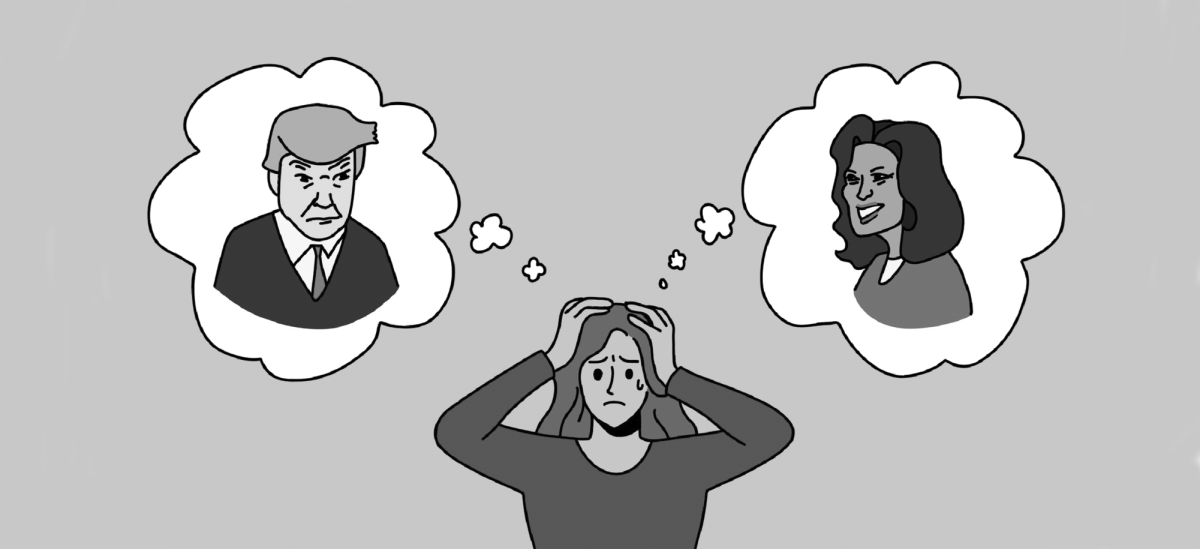Over the last century, Americans have largely faced a binary choice in politics: Democrat or Republican. The choice is not just a product of modern politics; the Electoral College has long necessitated a two-party framework, a trend that has largely persisted throughout American history. Over the past fifty years, the political landscape became even more polarized. The entrenched two-party system further deepened existing partisan divisions and pushed both parties toward ideological extremes. Against this backdrop, the majority of American voters today report feeling inadequately represented by either party and express frustration with the U.S. electoral process. Six in 10 Americans said they lack confidence in the future of U.S. politics, while eight in 10 said they believe these political parties are more focused on beating the other than solving real problems, according to a Pew Research report from Sept. 2023.
Despite Americans’ widespread dissatisfaction with the status quo, two party dominance hinders independent and third-party candidates from gaining significant traction on the national stage. Although third parties such as the Libertarian and Green Party consistently field presidential candidates, they struggle to garner the national support necessary to mount a serious challenge for the White House. Even in the 1992 presidential election, where independent candidate Ross Perot received over 18% of the popular vote, his strong performance was essentially rendered meaningless due to the Electoral College’s winner-take-all system, as he failed to win a single state and therefore received no electoral votes. Perot’s candidacy highlights a fundamental problem with the Electoral College. When nearly one-fifth of voters support a candidate, a large portion of the electorate is effectively disenfranchised. As a result, many Americans feel forced to choose between one of the two major party candidates, despite feeling ambivalent about either.
Frustration over the lack of pluralistic candidate choice is especially prevalent amongst young voters. 46% of voters aged 18 to 25 would opt to vote for a candidate other than the Democratic or Republic nominee, according to a poll conducted by Harvard’s Kennedy school in 2024.
One possible solution to address the structural bias inherent in the current Electoral College system would be to implement a system of proportional representation. Under such a system, the current binary paradigm would be replaced by a proportional distribution of electoral votes based on the percentage of the popular votes received by each candidate. This solution is feasible, as some states have already implemented similar approaches. Nebraska, for example, already awards electoral votes proportionally by district. As a result, in a state that overwhelmingly votes Republican, Former President Barack Obama won one of Nebraska’s five electoral votes in the 2008 election. Adopting a proportional system would benefit third parties and independents, while helping to reduce the hyper-partisan polarization and extremism that has arisen between and within the two major parties. In addition, such a system would incentivize voters to support the candidates that align most closely with their values, rather than being forced to vote for a major party candidate solely based on electability – a choice which is often described as choosing between the “lesser of two evils.”
While the current dysfunction in America’s political system and electoral processes cannot be fully addressed through a single reform, such as the introduction of proportional vote, such a change would mark a significant shift. This reform could encourage the emergence of new voices to challenge the political duopoly maintained by the two major parties. Younger voters, in particular, have expressed growing dissatisfaction with the electoral process and a deep skepticism regarding the ability of establishment politics and politicians to address the critical challenges disproportionately affecting their demographic. The introduction of greater choice and vigorous competition would foster a more representative and dynamic political process. Moreover, a voter empowered to align their choice closely with their values and best interests, rather than out of fear that their votes may be wasted, would encourage greater civic engagement and voter turnout and, ultimately, cultivate a more robust and a healthier democracy.






























